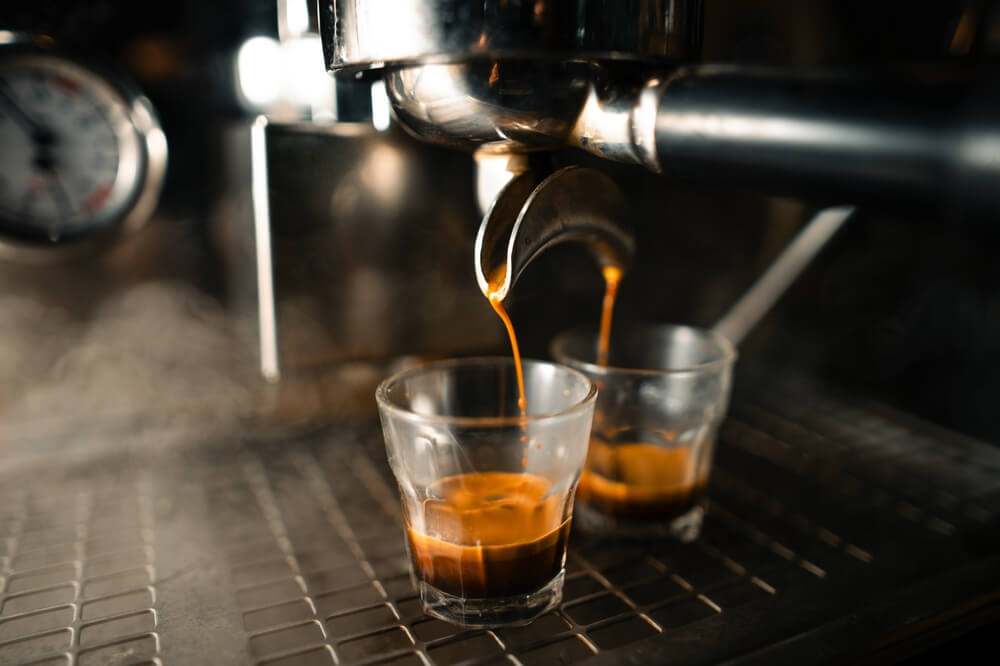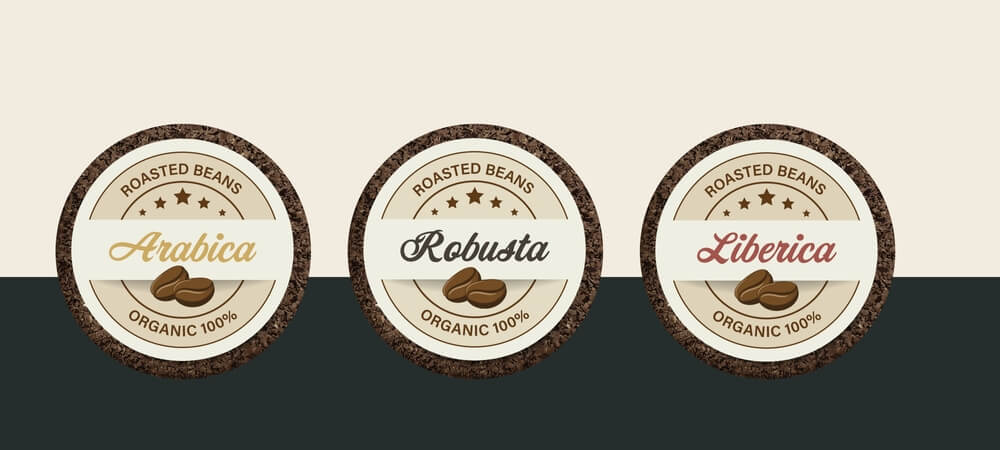
Coffee is enjoyed by millions worldwide, with varieties as diverse as the cultures that cherish it. This guide explores coffee from espresso-based drinks to unique international styles, offering insights into brewing methods, bean types, and flavor enhancements. Whether you’re an aficionado or newcomer, you’ll savor each sip more fully and discover new favorites.
The World of Coffee
Coffee is more than just a morning pick-me-up; it is a complex and versatile beverage with a rich history and an array of varieties that cater to diverse tastes. Understanding the world of coffee begins with familiarizing oneself with the different types of coffee beans, the various methods of brewing, and the numerous coffee drinks available.
There are primarily four types of coffee beans: Arabica, Robusta, Liberica, and Excelsa. Each type has its unique flavor profile and characteristics. Arabica beans are known for their smooth, slightly acidic taste and are often considered superior in quality. Robusta beans have a stronger, more bitter flavor and higher caffeine content. Liberica offers a woody or smoky taste, while Excelsa provides a tart, fruity profile.
When it comes to brewing methods, there is no shortage of options. From traditional drip coffee makers to French presses and espresso machines, each method extracts different flavors from the beans. For instance, espresso machines force hot water through finely-ground coffee at high pressure to produce a rich and concentrated shot of espresso.
Coffee drinks vary widely in preparation and presentation. Some popular choices include classic black coffee, lattes (espresso mixed with steamed milk), cappuccinos (equal parts espresso, steamed milk, and foam), macchiatos (espresso topped with a small amount of foam), Americanos (espresso diluted with hot water), and cold brews (coffee steeped in cold water for an extended period).
This introductory guide merely scratches the surface of what there is to know about coffee. Whether you are new to the world of coffee or looking to deepen your understanding, exploring different types of coffee varieties and drinks can be both an educational journey and a delightful experience for your taste buds.
Different Types of Coffee

When it comes to coffee, the variety of beans plays a crucial role in determining flavor, aroma, and overall experience. There are several types of coffee beans, but three primary ones dominate the market: Arabica, Robusta, and Liberica.
Arabica
Known for its smooth and complex flavor profile, Arabica is the most popular type of coffee bean. Grown primarily in high-altitude regions with ample rainfall and rich soil, these beans have a sweeter taste with hints of fruit and sugar. Arabica beans are generally considered superior in quality compared to other types.
Robusta
Robusta beans are known for their strong, bold flavor and higher caffeine content. They thrive in lower altitudes and harsher climates where Arabica cannot grow. The taste is often described as more bitter or earthy compared to Arabica. Due to their resilience against pests and diseases, Robusta plants yield more crops per acre.
Liberica
Less common but equally intriguing is Liberica coffee. Native to Western Africa but now also found in Southeast Asia, these beans offer a unique flavor that can be described as woody or smoky with floral undertones. The larger size of the Liberica bean sets it apart visually from its counterparts.
Understanding these different types of coffee can help you appreciate the diverse flavors available and make more informed choices when selecting your next cup. Whether you prefer the smooth elegance of Arabica, the robust punch of Robusta, or the distinctive notes of Liberica, there’s a world of coffee waiting to be explored.
Espresso-Based Coffee Drinks You Need to Try
Espresso-based coffee drinks have become a staple in cafes around the world, offering a variety of flavors and textures to suit any palate. Here are some must-try espresso-based beverages that every coffee enthusiast should experience:
Latte
A latte is a creamy and smooth drink made with one or two shots of espresso and steamed milk, topped with a small amount of milk foam. It’s perfect for those who enjoy a milder coffee flavor combined with the richness of milk.
Cappuccino: This classic Italian favorite consists of equal parts espresso, steamed milk, and milk foam. The result is a balanced drink with a strong coffee flavor complemented by the creamy texture of the milk.
Macchiato
A macchiato features an espresso shot “stained” with just a dash of steamed milk or foam. This drink highlights the boldness of espresso while softening its intensity slightly.
Americano
For those who prefer their coffee less intense but still rich in flavor, an Americano is an excellent choice. Made by diluting one or two shots of espresso with hot water, it offers a similar strength to drip coffee but retains the distinctive taste profile of espresso.
Flat White
Originating from Australia and New Zealand, the flat white is similar to a latte but uses microfoam steamed milk with tiny bubbles resulting in a velvety texture that blends seamlessly with the espresso.
Each of these drinks showcases the versatility and depth that can be achieved using just an espresso base and varying amounts of milk or water. Whether you prefer something strong like an Americano or something creamy like a latte, there’s an espresso-based option for everyone to enjoy.
Brewed Coffee Varieties
When it comes to brewed coffee, the variety of methods available can cater to every palate, from classic aficionados to specialty brew enthusiasts. Each method brings out unique flavors and characteristics in the coffee beans, offering a distinct experience with every cup.
Drip coffee
Drip coffee is perhaps the most common and convenient method. Using an automatic drip machine, hot water passes through ground coffee contained in a filter. This process delivers a consistent and balanced flavor profile that many people enjoy for their daily caffeine fix.
French press
The French press offers a more robust and full-bodied cup of coffee. In this method, coarsely ground coffee is steeped in hot water before being separated by pressing down a metal or plastic plunger through a mesh filter. The result is a rich and aromatic brew that retains more of the natural oils from the coffee beans.
Pour-over coffee
Pour-over coffee has gained popularity among purists who appreciate precision and control over their brewing process. By manually pouring hot water over freshly ground coffee through a paper filter, this method allows for meticulous adjustment of variables like water temperature and pour rate. The outcome is often a clean, complex cup that highlights nuanced flavors.
Cold brew
Cold brew stands out as an entirely different approach to making coffee. Coarse-ground beans are steeped in cold water for an extended period, typically 12 to 24 hours, resulting in a smooth, less acidic beverage that’s perfect for warm weather or those who prefer milder acidity in their drinks.
siphon coffee
Lastly, siphon coffee combines art with science using vacuum pressure to produce an exceptionally clean and flavorful cup. This visually captivating method involves brewing with two chambers where vapor pressure forces hot water into an upper chamber containing ground coffee before gravity pulls it back down through a filter as it cools.
Whether you prefer the simplicity of drip coffee or are intrigued by the intricate process of siphon brewing, exploring these various methods can elevate your appreciation for this beloved beverage.
International Coffee Styles and Their Unique Flavors
When it comes to coffee, the world offers a rich tapestry of styles and flavors that reflect cultural traditions and preferences. Let’s explore some international coffee styles and their unique flavors.
Turkish Coffee
Turkish coffee is renowned for its strong, robust flavor and unique preparation method. Finely ground coffee beans are simmered in a special pot called a cezve, often with sugar. The result is a thick, frothy brew with grounds settled at the bottom. This unfiltered coffee is traditionally enjoyed slowly, allowing the complex flavors to unfold.
Italian Espresso
Italian espresso is the cornerstone of many popular coffee drinks around the world. Made by forcing hot water through finely-ground coffee under high pressure, this method produces a small but intense shot of coffee with a rich crema on top. The bold flavor profile makes it perfect for sipping solo or as a base for cappuccinos and lattes.
Vietnamese Iced Coffee (Ca Phe Sua Da)
Vietnamese iced coffee, or ca phe sua da, offers a delightful contrast between strong and sweet flavors. Coarsely ground dark roast Vietnamese-grown beans are brewed using a drip filter into sweetened condensed milk over ice. The combination results in an invigoratingly sweet yet potent beverage that’s perfect for hot climates.
Greek Frappe
The Greek frappe is synonymous with summer relaxation by the sea or at bustling cafes. Made from instant coffee shaken vigorously with water and sugar until frothy, then poured over ice with milk (optional), this drink delivers an energizing caffeine kick paired with refreshing coolness.
Cuban Cafecito
Cuban cafecito is more than just espresso; it’s an experience steeped in tradition and community spirit. This small but mighty drink involves brewing strong espresso mixed immediately with demerara sugar to create espumita—a sweet foam that sits atop the shot—resulting in an intensely flavorful yet smooth finish.
These international coffees not only provide diverse taste experiences but also offer insights into different cultures’ relationships with this beloved beverage. Whether you’re savoring Turkish coffee’s depth or enjoying the refreshing simplicity of Greek frappe, each style brings its own unique charm to your cup.
Coffee Beans and Roasts
When delving into the world of coffee, understanding the basics of coffee beans and roasts is essential for any enthusiast. One of the fundamental distinctions lies between Arabica and Robusta beans. Arabica beans are known for their smooth, complex flavors and lower caffeine content, making them a favorite among specialty coffee drinkers. In contrast, Robusta beans have a stronger, more bitter taste with higher caffeine levels, often used in espresso blends for an added kick.
The roast level also significantly influences the flavor profile of your coffee. Light roasts preserve most of the bean’s original characteristics and offer a brighter acidity with fruity or floral notes. On the other hand, dark roasts tend to have bolder flavors with pronounced bitterness and smoky undertones due to longer roasting times.
Another aspect to consider is whether you’re drinking single-origin beans or blends. Single-origin beans come from one specific region or even a single farm, offering unique flavor profiles that reflect their geographic origin. Blends combine beans from multiple sources to achieve a balanced taste that can appeal to a broader audience.
Coffee Additives and Flavor Enhancements for a Perfect Cup
When it comes to crafting the perfect cup of coffee, the right additives and flavor enhancements can make all the difference. From syrups and flavorings to various milk options and spices, there are numerous ways to elevate your coffee experience.
Syrups and flavorings for coffee drinks are a popular choice for those looking to add a burst of flavor. Options like vanilla, caramel, hazelnut, and mocha can transform a regular cup of joe into a delightful treat. These syrups are often available in sugar-free varieties as well, catering to those who prefer a lower-calorie option.
Adding milk or cream is another classic way to enhance your coffee. Whole milk provides a rich and creamy texture, while skim or low-fat milk offers a lighter alternative. For an extra indulgent experience, heavy cream or half-and-half can be used. If you’re looking for vegan options such as almond or oat milk, these alternatives not only accommodate dietary restrictions but also add unique flavors that complement the natural taste of coffee.
Sugar substitutes for sweetening your brew are plentiful and cater to different health needs and preferences. Stevia, monk fruit extract, agave nectar, and even honey can provide sweetness without the added calories of traditional sugar.
Spices like cinnamon or nutmeg can also be sprinkled into your cup for an aromatic twist. These spices not only enhance the flavor but also offer potential health benefits such as anti-inflammatory properties.
Whether you prefer classic additions like milk and sugar or more adventurous options like flavored syrups and spices, there are countless ways to customize your coffee to suit your taste buds perfectly.



